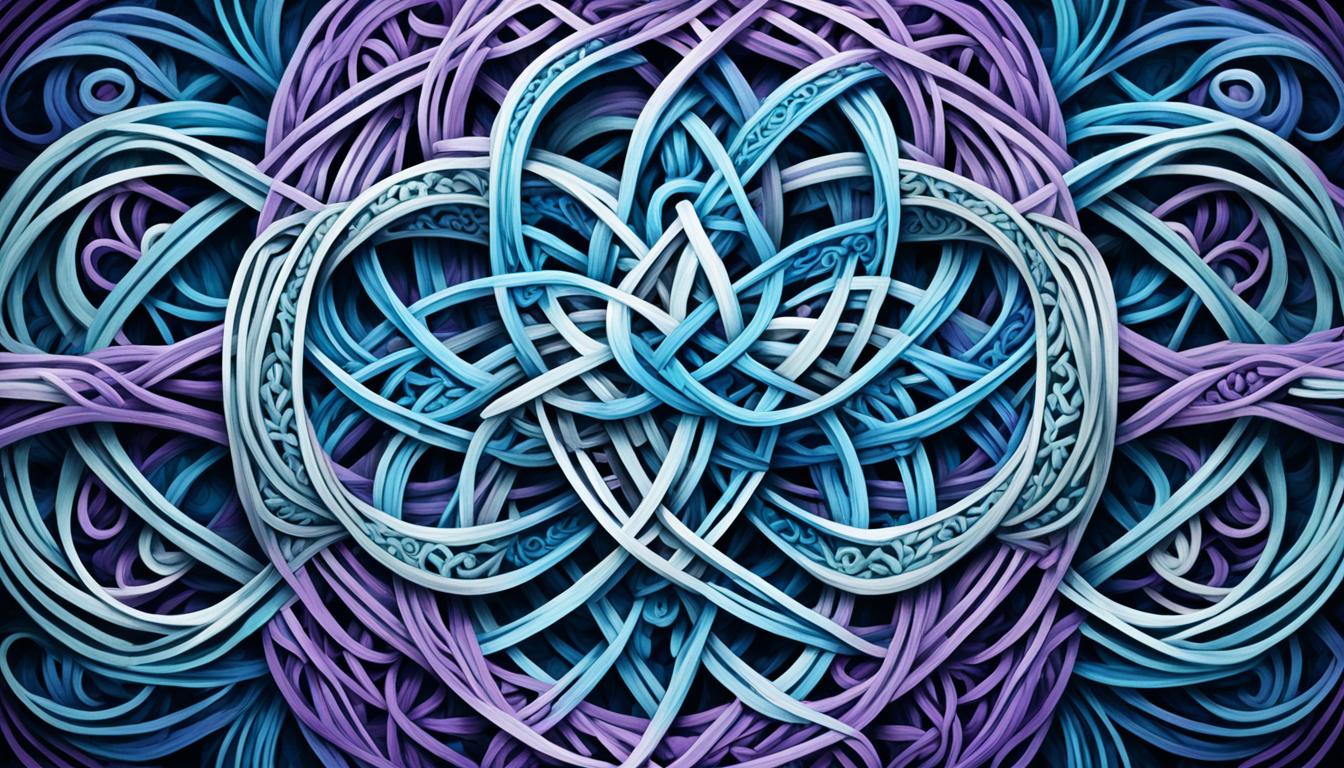Have you ever wondered about the deep spiritual meaning behind the endless knot? What is the symbolism behind this intriguing decorative symbol? And how does it connect to the teachings of Tibetan Buddhism? Prepare to unravel the secrets of the endless knot as we dive into its significance, explore its spiritual symbolism, and discover its cultural significance throughout history.
Key Takeaways:
- The endless knot is a powerful symbol of eternity, interconnectedness, and the endless cycle of life and death in Tibetan Buddhism.
- It represents the interconnectedness of all things and embodies wisdom, compassion, and the path to enlightenment in its intricate design.
- The endless knot holds deep spiritual symbolism, representing a divine connection between all beings and the boundless compassion and wisdom of the Buddha.
- It serves as a reminder of the importance of mindfulness, compassion, and interconnectedness in our daily lives.
- The knot has transcended its religious significance and has become a popular decorative symbol in jewelry, home decor, and fashion accessories.
The Spiritual Symbolism of the Endless Knot
In Tibetan Buddhism, the endless knot holds deep spiritual symbolism, representing the divine connection between all things and the interplay of cause and effect. This sacred symbol embodies the boundless compassion and wisdom of the Buddha, symbolizing the infinite nature of the universe and the interconnectedness of all beings.
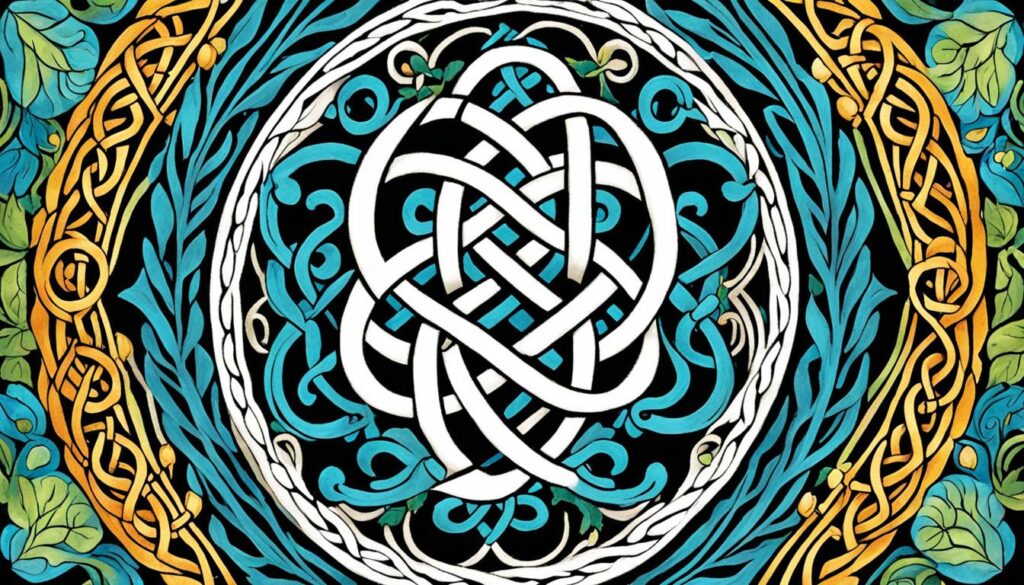
The endless knot’s intricate design, with its interwoven loops, is believed to symbolize the infinite potential and eternal nature of existence. It serves as a powerful reminder to strive for balance, harmony, and interconnectedness in our own lives.
The divine connection associated with the endless knot is central to Buddhist beliefs. It signifies the interdependence of all beings and the impact our actions have on others and the world around us. The knot’s symbolism encourages us to cultivate compassion, empathy, and mindfulness, fostering a deeper understanding of our interconnected nature.
The Divine Connection
At the heart of the endless knot lies the concept of the divine connection between all things. It represents the intricate web of relationships, both seen and unseen, that exists in the universe. By recognizing and honoring this interconnectedness, we can deepen our sense of spirituality and develop a greater understanding of our place in the world.
The endless knot serves as a reminder of the interplay of cause and effect, illustrating the ripple effects of our actions. It encourages us to act with kindness, compassion, and wisdom, knowing that our actions have far-reaching consequences that can contribute to the well-being of all beings.
Buddhist Beliefs and Symbolism
In Buddhism, the endless knot is seen as a symbol of the boundless compassion and wisdom inherent in the Buddha’s teachings. It represents the infinite potential for enlightenment and the eternal nature of existence. The knot’s intertwining design symbolizes the interdependence and interconnectedness of all phenomena, emphasizing the unity of all things.
By contemplating the symbolism of the knot, practitioners are reminded of the importance of embodying compassion, wisdom, and interconnectedness in their daily lives. It serves as a visual aid for meditation and reflection, fostering a deepened understanding and connection to Buddhist principles.
| Symbolism | Meaning |
|---|---|
| Interconnectedness | Represents the unity and interdependence of all beings. |
| Infinite Potential | Symbolizes the boundless possibilities and potential for growth. |
| Eternal Nature | Signifies the timeless and ever-present nature of existence. |
| Compassion and Wisdom | Reflects the qualities of the Buddha and the path to enlightenment. |
The Endless Knot and Buddhist Teachings
The endless knot holds profound significance in Buddhist teachings, serving as a powerful symbol that encapsulates key principles of the faith. It serves as a reminder of the essential concepts of mindfulness, compassion, interconnectedness, and personal and societal harmony.
Buddhist teachings emphasize the practice of mindfulness, the art of being fully present in the moment with an open and non-judgmental attitude. The endless knot embodies this principle by reminding us to cultivate awareness and deep connection to our experiences, thoughts, and emotions.
Compassion is another fundamental aspect of Buddhist teachings, and the endless knot symbolizes the infinite compassion that practitioners aspire to cultivate. It encourages us to extend compassion not only to ourselves but also to all sentient beings, recognizing the interconnectedness of our shared existence.
Furthermore, the endless knot represents the interdependent nature of reality, illustrating how the actions of one individual can have far-reaching consequences for others and the world as a whole. It serves as a reminder of the ethical responsibility we have to consider the impact of our choices and behavior on others, promoting a harmonious and interconnected society.
In the pursuit of personal harmony, the endless knot teaches us to cultivate inner peace and compassion. By embracing the interconnectedness of all things, we gain a deeper understanding of our place in the world and our interconnected relationship with others. This leads to a greater sense of personal fulfillment and harmony.
Moreover, the endless knot offers valuable insights for addressing contemporary challenges and promoting societal harmony. Through compassion, understanding, and recognizing our interconnectedness, we can foster more inclusive and harmonious communities where everyone thrives.
By embracing the profound teachings symbolized by the endless knot, we can cultivate mindfulness, compassion, and interconnectedness in our lives, fostering personal and societal harmony. The endless knot serves as a guiding light, reminding us of the transformative power that lies within us to create a more compassionate and interconnected world.
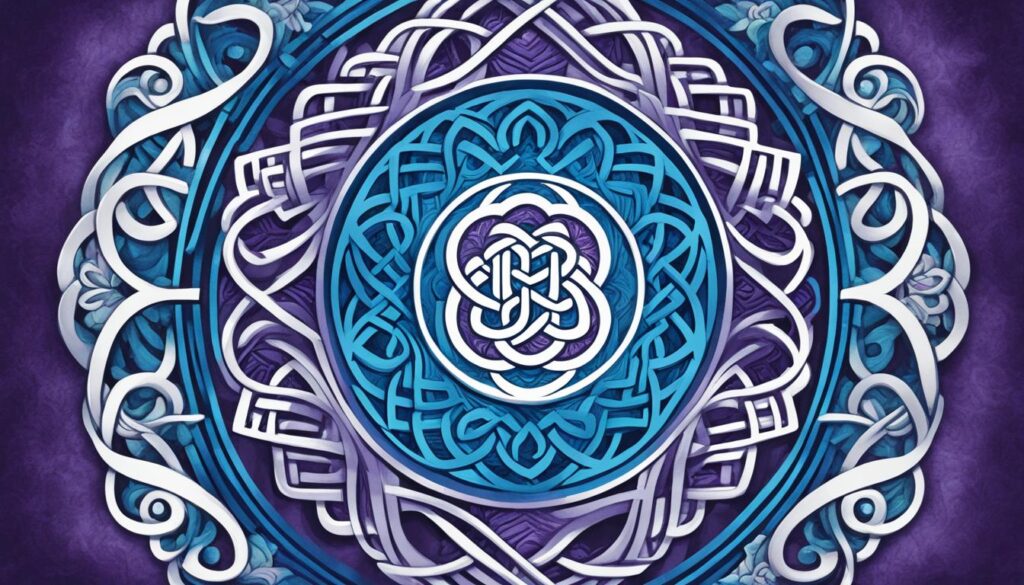
The Endless Knot in Tibetan Buddhism
Tibetan Buddhism encompasses a rich tapestry of cultural and religious practices, with the endless knot holding a prominent position within its traditions. This symbol, intricately woven and visually captivating, carries immense cultural significance and plays a vital role in religious iconography, sacred rituals, and meditation practices.
As a central visual representation of the teachings of the Buddha, the endless knot holds deep spiritual meaning for Tibetan Buddhists. Its intricate design serves as a powerful tool for meditation and contemplation, aiding practitioners in focusing their minds and deepening their understanding of Buddhist principles.
The endless knot is often featured in thangka paintings and statues, depicting important figures and moments in Tibetan Buddhist mythology. These artworks showcase the divine connection between the physical world and the spiritual realm, offering a visual representation of the interplay between cause and effect.
One of the most sacred rituals in Tibetan Buddhism is the offering of the khata, or ceremonial silk scarf. The knot is frequently woven into these scarves, symbolizing the interconnectedness of all beings and the infinite web of causality. By offering a khata adorned with the endless knot, devotees express their reverence and commitment to the teachings of Buddhism.
To further explore the cultural significance of the endless knot in Tibetan Buddhism, let’s delve into its intricate symbolism:
The Symbolism of the Endless Knot in Tibetan Buddhism
Symbolism plays a central role in Tibetan Buddhism, with the endless knot representing a multitude of meanings and concepts. Also known as the “eternal” or “endless” knot, it embodies the timeless nature of existence and the interconnectedness of all things.
The endless knot’s intertwined lines form a complex and continuous pattern, symbolizing the interdependence of all phenomena. It reflects the Buddhist belief in the fundamental interconnectedness of individuals, highlighting the impact of our actions on ourselves and the world around us.
Furthermore, the endless knot represents the intricate wisdom of the Buddha and the harmonious interplay of wisdom and compassion. It serves as a reminder to cultivate both qualities in our own lives, striving for personal and societal harmony.
The symbolism of the endless knot can be summarized in three key aspects:
- The Infinite Nature of Existence: The knot’s boundless, never-ending design alludes to the infinite potential and eternal nature of existence within the Buddhist framework.
- Interconnectedness: The interweaving lines of the knot represent the interconnectedness of all beings, highlighting the inherent interdependence and shared destinies of individuals.
- Wisdom and Compassion: The intricate knot symbolizes the harmony between wisdom and compassion, emphasizing the importance of cultivating both qualities in the pursuit of enlightenment and personal growth.
To gain a deeper understanding of the endless knot’s cultural and religious significance within Tibetan Buddhism, let’s explore a table highlighting its core elements:
| Symbol | Meaning |
|---|---|
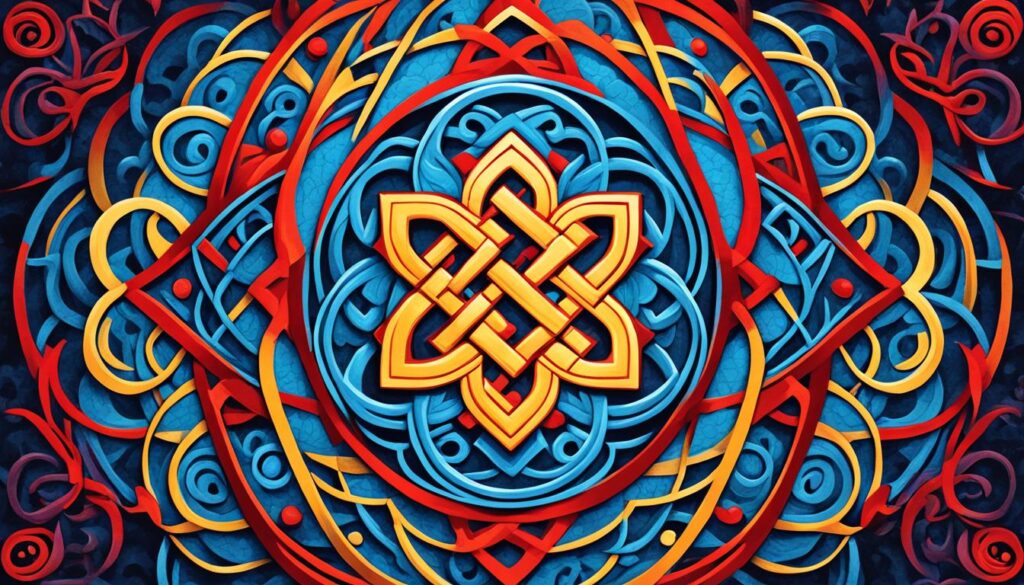 | The endless knot |
| Cultural Significance | Represents the essence of Tibetan Buddhist philosophy and serves as a visual representation of the teachings of the Buddha. |
| Religious Iconography | Featured in thangka paintings and statues, serving as a visual representation of divine connection and interplay of cause and effect. |
| Sacred Rituals | Incorporated into ceremonial scarves (khatas) to express reverence and commitment to Buddhist teachings. |
| Meditation Practice | Used as a visual aid during meditation and contemplation to deepen understanding and focus the mind. |
The endless knot’s presence in Tibetan Buddhism goes beyond its visual appeal. It serves as a profound reminder of the interconnectedness of all beings and the eternal nature of existence. By incorporating this symbol into their art, rituals, and meditation practices, Tibetan Buddhists strive to deepen their spiritual understanding and cultivate compassion and wisdom.
The Endless Knot as a Decorative Symbol
The endless knot is more than just a religious symbol, it has evolved into a versatile decorative element that adds meaning and beauty to various contexts. From jewelry to home decor to fashion accessories, the endless knot has become a popular choice for those seeking a symbol of interconnectedness and timeless elegance.
Jewelry
When it comes to jewelry, the endless knot holds a special place. Its intricate design, with its interweaving lines and loops, is not only visually appealing but also carries a profound message. Necklaces, bracelets, and earrings adorned with the endless knot symbolize the interconnectedness of all things, reminding you to embrace compassion and mindfulness in your daily life. Whether you wear it as a personal reminder or as a thoughtful gift to a loved one, endless knot jewelry is a meaningful and stylish choice.
Home Decor
The endless knot’s intricate design and symbolic nature make it a perfect fit for home decor. Tapestries, rugs, and artwork featuring the endless knot add a touch of spirituality and refined elegance to any space. Whether you place it in your living room, bedroom, or meditation area, the endless knot serves as a visual reminder of interconnectedness and harmony. It invites you to create a sanctuary that promotes mindfulness and inner peace.
Fashion Accessories
In the world of fashion, the endless knot has found its place as a statement piece. Scarves, handbags, and belts adorned with the endless knot symbol not only add a touch of elegance to your outfit but also carry a deeper meaning. These fashion accessories serve as a reminder to embrace interconnectedness and compassion as you navigate through the world. By incorporating the endless knot into your fashion choices, you not only express your personal style but also showcase your values and beliefs.
Whether you choose to wear it as jewelry, display it in your home, or incorporate it into your fashion accessories, the endless knot is a versatile and meaningful decorative symbol that adds a touch of spirituality and elegance to every aspect of your life.
The History and Cultural Significance of the Endless Knot
The endless knot has a rich history and cultural significance that spans across various civilizations and religious traditions. It is believed to have originated in ancient Babylonian culture, where it was used as a symbol of perfect harmony and balance.
The knot’s intricate design and symbolic meaning captivated the ancient Greeks, who incorporated it into their mathematics, geometry, and architecture.
In the Middle Ages, the endless knot gained prominence in Christian and Islamic cultures as a symbol of virtue, idealism, and interconnectivity. Its enduring symbolism and universal appeal continue to resonate with people today.
Explore the cultural significance of the endless knot in different civilizations and religious traditions:
Ancient Babylonian Culture
In ancient Babylonian culture, the endless knot symbolized the interconnectedness of all things and the pursuit of perfect harmony. It was seen as a representation of the cyclical nature of life and death, with no beginning or end.
Ancient Greek Mathematics and Geometry
The ancient Greeks were fascinated by the endless knot’s intricate design and incorporated it into their mathematics and geometry. They recognized its significance as a symbol of interconnectedness and used it to represent the infinite nature of the universe.
Medieval Christianity
In medieval Christianity, the endless knot became a symbol of divine love, unity, and eternity. It was often depicted in religious art to signify the unending nature of God’s love and the interconnectedness of all creation.
Islamic Symbolism
In Islamic culture, the endless knot symbolized the interplay between the physical and spiritual realms. It represented the interconnectedness of all beings and the infinite wisdom of God. The knot’s intricate design served as a reminder of the complexity and beauty of the universe.
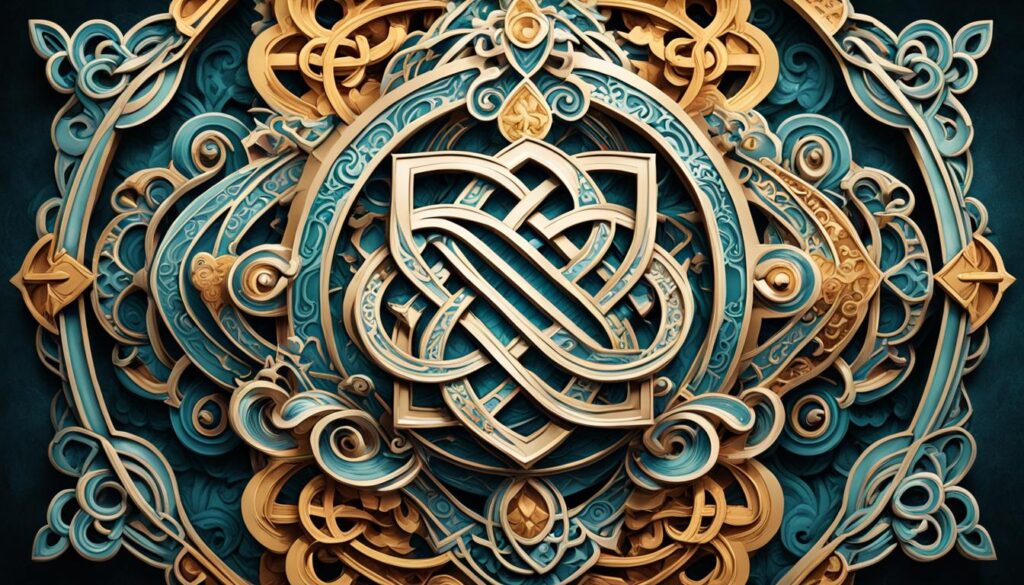
As the endless knot traveled through different cultures and traditions, its symbolism adapted and evolved. However, its core message of interconnectedness, balance, and eternal wisdom remained constant.
| Civilization/Religious Tradition | Symbolic Meaning |
|---|---|
| Ancient Babylonian Culture | Perfect harmony and balance, interconnectedness of all things |
| Ancient Greek Mathematics and Geometry | Infinite nature of the universe, interconnectedness |
| Medieval Christianity | Divine love, unity, eternity |
| Islamic Symbolism | Interconnectedness, infinite wisdom of God |
Conclusion
The endless knot is a powerful symbol that holds profound spiritual symbolism in Tibetan Buddhism and other cultural traditions. Its intricate design and deep meaning serve as a reminder of the interconnectedness of all things. By embracing the teachings of the endless knot, we can cultivate mindfulness, compassion, and understanding in our lives, fostering a more harmonious and compassionate world.
Through the endless knot, we are reminded of the importance of mindfulness – being fully present in the moment, and cultivating a compassionate attitude towards ourselves and others. It symbolizes the interdependence of individuals and the impact of our actions on others and the world around us.
In Tibetan Buddhism, the endless knot is seen as a visual metaphor for the teachings of Buddha. Its interconnected loops represent the wisdom, compassion, and the path to enlightenment. By contemplating the symbol and embodying its principles, we can deepen our understanding of Buddhist teachings and strive for personal and societal harmony.
Whether it is used as a decorative symbol, a tool for meditation, or a reminder of our interconnectedness, the endless knot continues to resonate with people across cultures and religions. As we embrace its symbolic meaning, we can cultivate a deeper sense of interconnectedness, mindfulness, and compassion in our daily lives, bringing us closer to the path of enlightenment.
FAQ
What is the meaning of the endless knot?
The endless knot is a decorative symbol with profound spiritual significance in Tibetan Buddhism. It represents the concepts of eternity and interconnectedness and is seen as a visual metaphor for the teachings of Buddhism.
What does the endless knot symbolize?
The endless knot symbolizes the interconnectedness of all things and the endless cycle of life and death. It is believed to embody wisdom, compassion, and the path to enlightenment.
What is the significance of the intricate design of the endless knot?
The intricate design of the endless knot is believed to symbolize the infinite potential and eternal nature of existence. It serves as a reminder of the interconnectedness of all beings and the importance of compassion and mindfulness.
How is the endless knot used in Tibetan Buddhism?
The endless knot is featured in religious iconography, such as thangka paintings and statues, and is used in sacred rituals and ceremonies. It is also used as a tool for meditation and contemplation, helping practitioners focus their minds and deepen their understanding of Buddhist principles.
Where else can the endless knot be seen?
The endless knot has transcended its religious and spiritual significance and has become a popular decorative symbol. It is used in jewelry, home decor, and fashion accessories, serving as a meaningful and aesthetically pleasing design element.
What is the history and cultural significance of the endless knot?
The endless knot has a rich history that spans across various civilizations and religious traditions. It is believed to have originated in ancient Babylonian culture and was later incorporated into Greek mathematics, geometry, and architecture. It has also gained prominence in Christian and Islamic cultures as a symbol of virture and interconnectivity.
What can we learn from the teachings of the endless knot?
The teachings of the endless knot remind us of the importance of mindfulness, compassion, and interconnectedness. By embracing its symbolic meaning, we can cultivate a deeper sense of personal and societal harmony, striving for a more compassionate and understanding world.

